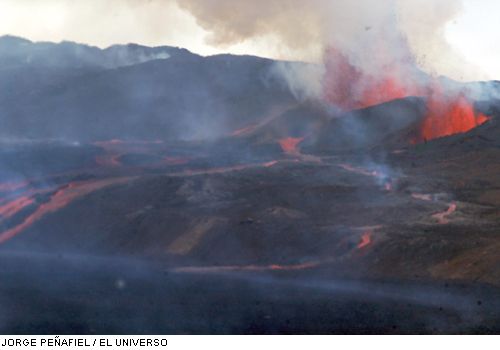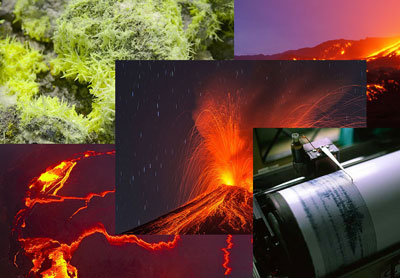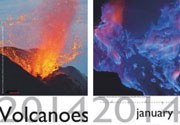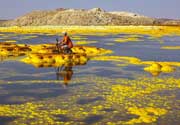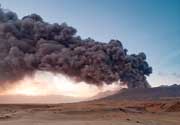Sierra Negra volcano (Galapagos): strong earthquakes precede the start of a first fissure eruption since 2005
Wed, 27 Jun 2018, 10:06 | IS
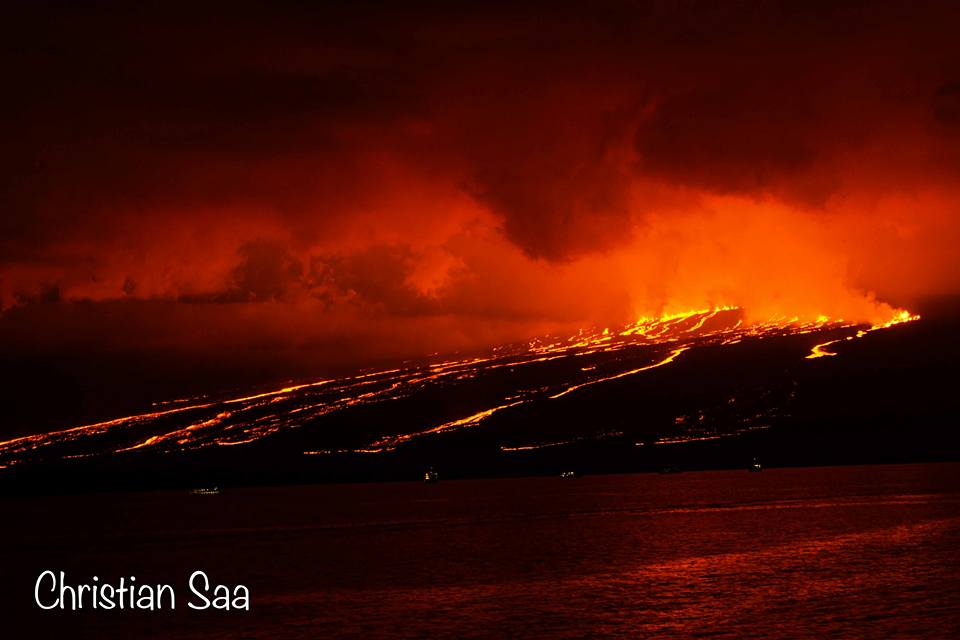
The nighttime sky is turned red due to the red glow from the lava fountaining from the fissures, forming multiple rivers flowing towards the ocean (image shared on Facebook page of Christian Saá)
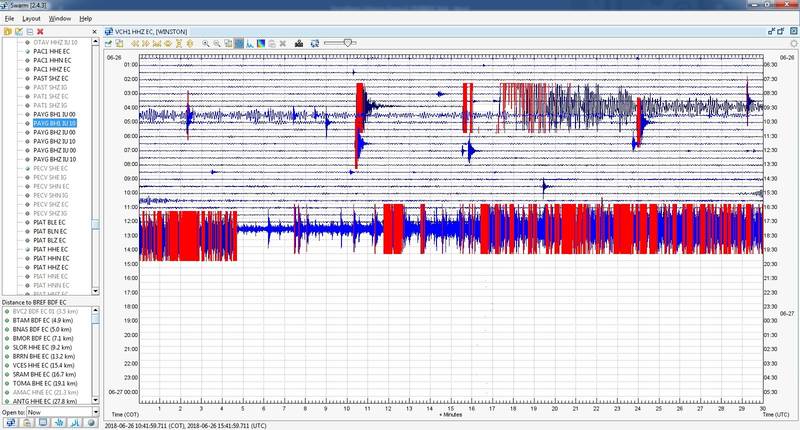
Seismogram showing the M5.3 earthquake around 3h15 with aftershocks and then after a few hours of low seismicity the start of the continuing seismic crisis that announced the onset of the volcano’s new eruption (IGEPN)
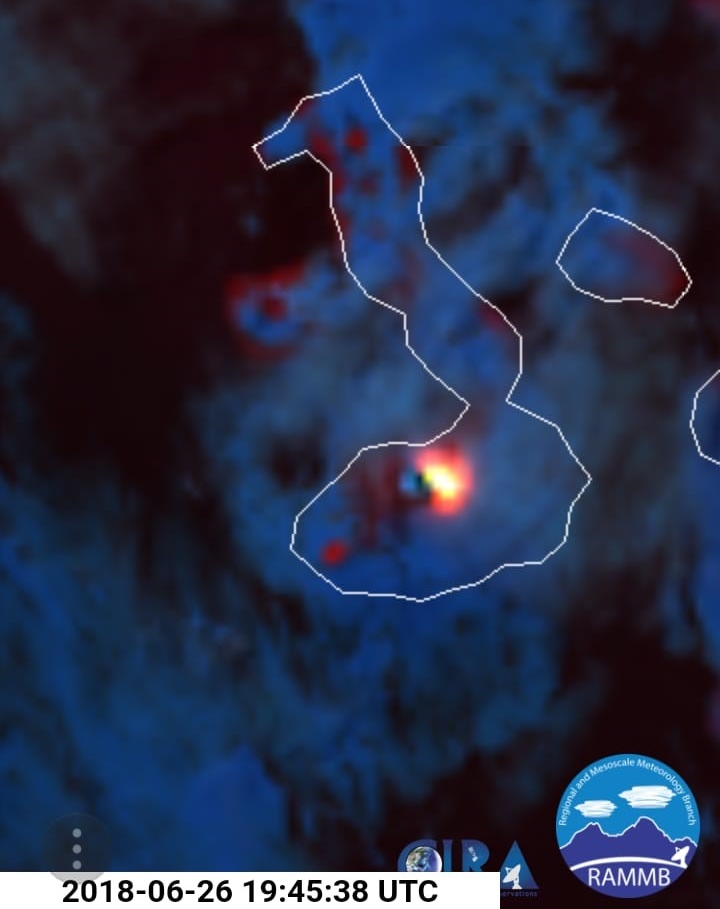
Satellite image of GOESS 16 at 13:45 TG, showing a hot spot in the N-NE sector of the Sierra Negra caldera (IGEPN)
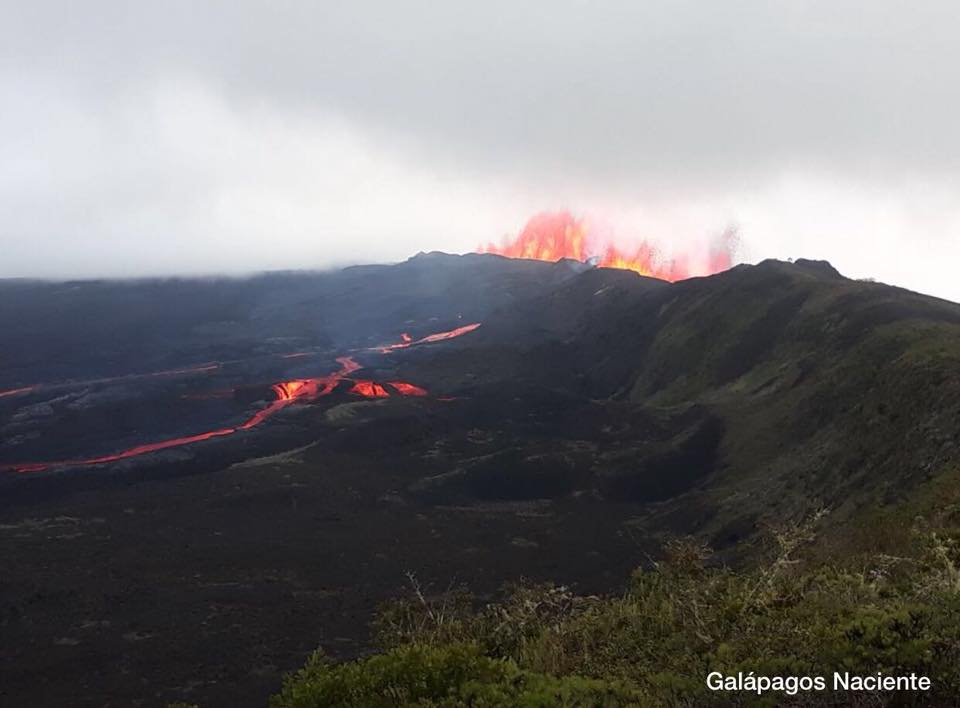
Image of one of the lava fountains that have been formed during Cerra Negra’s new fissure eruption (image shared on Facebook page Galápagos Naciente)
A recent seismic crisis represents the culmination of about 2 years of steady increase in seismic activity beneath the volcano (read our 14 June 2018 news update here). The Geophysical Institute of Ecuador (IGEPN) reported a M5.3 earthquake occurred beneath the volcano at a depth of about 5.3 km at 03h15 Galapagos Time (TG). This earthquake was preceded by a M3 event at 3h10 and followed by a series of aftershocks of magnitude 3 -4, all of which were felt in the village of Puerto Villamil, 20 km SE of the volcano.
After a short pause, a new swarm of earthquakes started at 11h17 TG, at depths between 3 and 5 km and magnitudes up to 4.6. This seismic unrest continued until around 13h38 TG a change in the seismicity was observed with increasing amplitudes between the seismic and infrasound signal, indicating the onset of a new eruption. This new eruptive phase was quickly confirmed by a GOES-16 satellite image showing a strong anomaly of heat in the northern area of the volcano's caldera, suggesting the presence of lava flows in this area.
Subsequent eye witness reports from the Galapagos National Park employees indicate that some lava flows are running into the caldera but that there is also lava flowing towards the north flank in the direction of Bahía Elízabeth. A tall ash column moving in westerly direction was also observed. First images of this eruptive phase were soon shared on social media, showing lava fountains from newly opened fissures which create multiple rivers of lava flowing towards the ocean.
Sierra Negra is a large basaltic shield volcano with a 9 km by 7 km caldera located on Isabela, the largest island of the Galapagos. At least 250 people have already been evacuated from communities in the immediate vicinity of the volcano. All tourist and school activities near the volcano have been suspended according to Secretary of Risk Management, Alexandra Ocles, who said the eruption is currently moderate.
This eruption starts only 10 days after the youngest and most active Galapagos volcano, Cerro la Cumbra on the neigbouring, uninhabited, island of Fernandina, started a new fissure eruption with fountaining and lava flows that quickly reached the ocean (you can read our article on this eruption here)
Some first image of the new fissure eruption during the afternoon of 26 June were shared on the Facebook page Galápagos Naciente:
You can find an impressive set of night-time images of the new eruption on the Facebook page of Christian Saá:
- All news about: Sierra Negra volcano
- Information about: Sierra Negra volcano
---
Links / Sources:
Links / Sources:
Previous news
Wed, 27 Jun 2018, 06:00
Sierra Negra volcano (Isla Isabela, Ecuador) - Smithsonian / USGS Weekly Volcanic Activity Report for 27 June-3 July 2018 (New Activity / Unrest)
Based on video and photos shared by Parque Nacional Galápagos staff, IG reported that the eruption at Sierra Negra that began at 1340 on 26 June originated from several fissures on the N flank and one within the caldera. The flank flows reached the sea between Elizabeth Bay and Punta Morena. A gas-and-ash plume rose about 10.5 km and drifted W. ... Read all
Wed, 20 Jun 2018, 06:00
Sierra Negra volcano (Isla Isabela, Ecuador) - Smithsonian / USGS Weekly Volcanic Activity Report for 20 June-26 June 2018 (New Activity / Unrest)
On 22 June IG reported increased seismic activity at Sierra Negra on the S end of Isabela Island; the largest event, a M 4.2, was recorded at 0624 and felt in El Cura and San Joaquín, NE of the volcano. A M 5.3 earthquake was detected at 0315 on 26 June, occurring at a depth of 5.3 km below Sierra Negra. The event was strongly felt on the upper flanks and in Puerto Villamil (23 km SE). ... Read all
Show more






